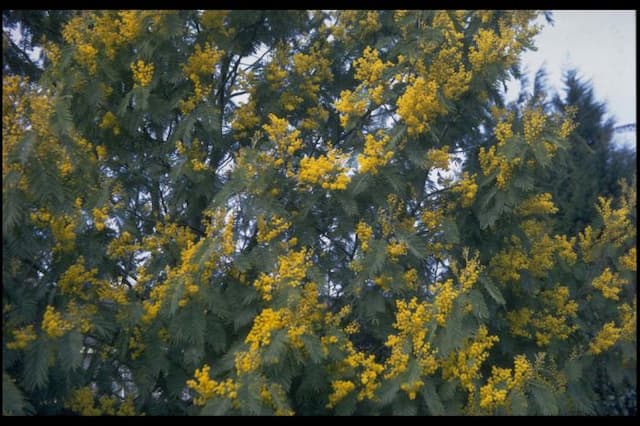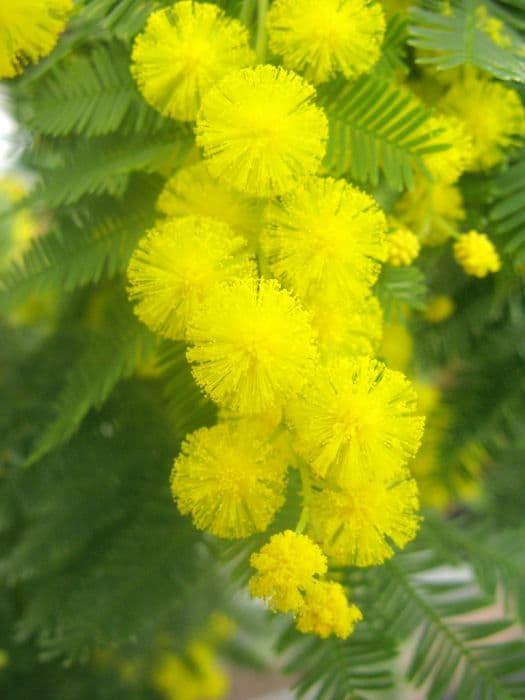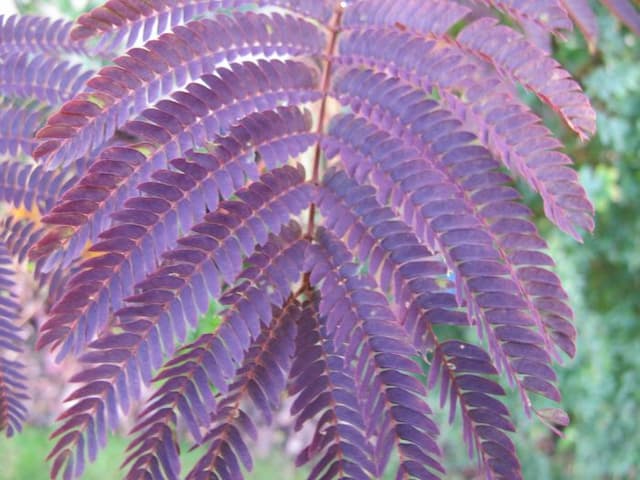Sweet pea Lathyrus odoratus 'White Supreme'

ABOUT
The plant known as Sweet Pea 'White Supreme' is an ornamental flowering plant cherished for its elegant and showy features. The flowers of this cultivar are pure white and have a pristine appearance, giving them a sense of delicate charm. These flowers are typically large and ruffled, with a classic sweet pea shape that includes both a standard, or banner petal, which is the large, upright petal, and the wing petals that are on the sides. Borne on long, slender stems, the white blossoms are arranged in clusters, creating an appealing visual impact. The flowers are also renowned for their delightful fragrance, which is as enchanting as the floral display itself, contributing to a sensory garden experience. The foliage consists of bright green leaves that are pinnate, meaning they are composed of multiple small leaflets on either side of a central stem. The overall impression is one of lush, verdant growth that forms a lovely backdrop for the white flowers. The Sweet Pea 'White Supreme' supports itself by twining tendrils that reach out and wrap around nearby support structures, making it well-suited for growing on trellises, fences, or other garden supports where it can showcase its floriferous nature. The visual appeal of this plant makes it a favored choice for gardeners looking to add a touch of classic elegance to their floral arrangements or garden beds.
About this plant
 Names
NamesFamily
Fabaceae.
Synonyms
Sweet Pea, Everlasting Pea, Annual Pea, Perennial Pea.
Common names
Lathyrus odoratus 'White Supreme'.
 Toxicity
ToxicityTo humans
Sweet pea, including the cultivar 'White Supreme', contains toxic compounds, particularly in its seeds and seed pods, that can be harmful if ingested. Consumption of parts of the plant, especially the seeds, can lead to a condition known as lathyrism. Symptoms of lathyrism may include paralysis, labored breathing, convulsions, and, in severe cases, death. Some people may suffer from more mild symptoms such as vomiting and abdominal pain. Chronic exposure to the toxins, particularly by regular consumption of the seeds, can lead to a more severe condition that includes potentially irreversible effects such as muscle wasting and paralysis.
To pets
Sweet pea, including the 'White Supreme' variety, is also toxic to pets such as dogs and cats. The seeds and seed pods contain amino acids that can be harmful if ingested by animals. Symptoms of poisoning in pets can include lethargy, pacing, tremors, seizures, and difficulty breathing. Chronic ingestion can lead to more severe health issues including musculoskeletal and nervous system damage. It is important to keep pets away from sweet peas, especially the seeds, to prevent accidental ingestion and potential toxicity.
 Characteristics
CharacteristicsLife cycle
Annuals
Foliage type
Deciduous
Color of leaves
Green
Flower color
White
Height
6 feet (1.83 meters)
Spread
1 foot (0.30 meters)
Plant type
Climber
Hardiness zones
2
Native area
Mediterranean
Benefits
 General Benefits
General Benefits- Aesthetic Appeal: Sweet pea 'White Supreme' offers delicate white blooms that can enhance the beauty of any garden with their charming appearance.
- Fragrance: This variety is known for its sweet and pleasant fragrance, contributing to a sensory garden experience.
- Attracts Pollinators: Sweet peas are good for attracting bees and butterflies, which are beneficial for pollination of garden plants.
- Cut Flowers: They make excellent cut flowers due to their long stems and attractive blooms, perfect for floral arrangements and bouquets.
- Vertical Interest: Sweet pea 'White Supreme' can climb trellises and fences, adding vertical interest to garden spaces.
- Easy to Grow: They are generally easy to cultivate and can grow in a variety of soil types, though they prefer well-drained soils.
- Fast Growing: Sweet peas are fast-growing plants, providing quick coverage and blooms, often within a single growing season.
- Seasonal Color: They offer seasonal color, usually in the spring and early summer, which can be coordinated with other flowering plants for continuous bloom.
- Variety of Uses: These plants can be used in borders, containers, and even as ground cover if supported properly.
- Heirloom Plant: As an heirloom variety, it can be a part of a historical or heritage garden, connecting gardeners to the past.
- Edible Pea Pods: While not related to the benefits of the flowering sweet pea, certain Lathyrus species do produce edible pea pods; however, please note that seeds of ornamental sweet pea plants are toxic and should not be consumed.
 Medical Properties
Medical PropertiesThis plant is not used for medical purposes.
 Air-purifying Qualities
Air-purifying QualitiesThis plant is not specifically known for air purifying qualities.
 Other Uses
Other Uses- Crafting natural dyes: The petals of sweet pea flowers can be used to create subtle natural dyes for fabrics, providing a soft, eco-friendly coloring option.
- Photography prop: Sweet peas can be utilized as a delicate and aesthetically pleasing prop in portrait and still life photography sessions.
- Educational tool: These plants can serve as an example in botany education to illustrate the parts of a flowering plant or to explain pollination and growth cycles.
- Floral art: Sweet pea blossoms can be incorporated into pressed flower art projects due to their vibrant colors and interesting textures.
- Composting: After sweet peas have finished blooming, the plant material can be composted to create nutrient-rich soil for gardening.
- Homemade potpourri: Dried sweet pea flowers can be mixed with other natural ingredients to create a fragrant homemade potpourri.
- Garden pea support: The sturdy vines of sweet peas can help support other climbing plants, such as garden peas, when they are planted in close proximity.
- Seed harvesting: Hobbyists may collect seeds from the sweet pea pods to trade with other gardeners or to save for planting in subsequent years.
- Ice cube decoration: Petals of sweet peas can be frozen within ice cubes to add a splash of color and flair to summer drinks and cocktails.
- Storytelling and mythology: Sweet peas can be incorporated into stories or plays, especially those set in gardens or involving themes of growth and renewal.
Interesting Facts
 Feng Shui
Feng ShuiThe Sweet Pea is not used in Feng Shui practice.
 Zodiac Sign Compitability
Zodiac Sign CompitabilityThe Sweet Pea is not used in astrology practice.
 Plant Symbolism
Plant Symbolism- Blissful Pleasure: Lathyrus odoratus, commonly known as Sweet Pea, often symbolizes blissful pleasure due to its delightful fragrance and delicate appearance.
- Goodbye and Departure: The sweet pea can also represent goodbyes or farewells, possibly because it is often given when someone is leaving or as a way to cherish pleasant memories.
- Thankfulness: As a gift, sweet peas are given to express gratitude, a form of appreciation for kindness or hospitality received.
- Delicate Pleasures: Reflecting its own gentle nature, Sweet Pea signifies the enjoyment of delicate, ephemeral pleasures in life.
 Water
WaterSweet peas prefer steady moisture and should not be allowed to dry out completely. Water them regularly, around once a week, providing about an inch of water which translates to approximately 0.6 gallons for a standard garden area. During particularly hot or dry weather, it may be necessary to increase watering frequency to twice a week. It's important to avoid overhead watering to prevent disease; instead, water at the base of the plant early in the day to allow foliage time to dry.
 Light
LightSweet peas thrive in full sunlight, requiring at least 6 to 8 hours of direct sunlight daily. They perform best when planted in a location where they receive morning sun and some protection from the intense heat of late afternoon sunlight, possibly providing light shade during the hottest part of the day in very warm climates. They should be positioned in an area where daylight is unobstructed to ensure vigorous growth and ample flowering.
 Temperature
TemperatureSweet peas prefer cool to moderate temperatures and grow best when daytime temperatures are between 55°F and 65°F. They can tolerate temperatures down to about 25°F for short periods but will not survive long at these lower temperatures. Ideal growing conditions include cool nights and temperate days. When temperatures consistently exceed 80°F, sweet peas may struggle and stop producing flowers.
 Pruning
PruningSweet peas benefit from regular deadheading to encourage continuous blooming. Prune spent flowers and seed pods weekly to redirect the plant's energy into producing new blooms. At the beginning of the season, pinch back the tips of the plant to stimulate bushier growth. The best time for overall pruning is in late winter or early spring, before the new growth begins.
 Cleaning
CleaningAs needed
 Soil
SoilSweet Pea 'White Supreme' thrives in rich, well-draining soil with a pH between 6.0 and 7.5. A good mix for this plant would be equal parts loam, peat, and sharp sand to ensure adequate drainage and fertility. It's important to incorporate compost or well-rotted manure prior to planting to provide the necessary nutrients for growth.
 Repotting
RepottingSweet Peas, including 'White Supreme', are typically grown as annuals and do not usually require repotting. If started in containers, they should be planted out in the garden before becoming root-bound to prevent disruption of their rapid growth.
 Humidity & Misting
Humidity & MistingSweet Pea 'White Supreme' prefers moderate humidity levels, but as a garden plant, it is generally adaptable to the ambient outdoor humidity. Maintaining good air circulation around the plants can help prevent fungal diseases, which can be a concern in high humidity conditions.
 Suitable locations
Suitable locationsIndoor
Plant Sweet Pea 'White Supreme' in a sunny spot with support for climbing.
Outdoor
Grow Sweet Pea 'White Supreme' in well-drained soil with full sun.
Hardiness zone
3-10 USDA
 Life cycle
Life cycleThe life of the Sweet Pea 'White Supreme' begins with seed germination, often in late winter or early spring after a period of cold stratification or soaking to encourage sprouting. Following germination, the plant enters its vegetative stage where it grows stems, foliage, and tendrils, and develops a robust root system. As the weather warms, the Sweet Pea proceeds to the flowering stage, producing fragrant white flowers that attract pollinators and may be followed by forming seed pods if pollination is successful. Once the seeds mature, the plant reaches senescence, where it begins to decline, often coinciding with the onset of summer heat. The plant will eventually die back, completing its annual life cycle, though it may reseed itself for the following growing season if seed pods are left to naturally disperse. During the plant's life, regular pruning and deadheading encourage further blooming and a prolonged flowering stage.
 Propogation
PropogationPropogation time
Spring
Lathyrus odoratus 'White Supreme', commonly known as the sweet pea, is most commonly propagated by seed. The best time to sow sweet pea seeds is in late winter to early spring, allowing for a period of stratification which can enhance germination. This is typically done by soaking the seeds in water for 24 hours to soften the hard outer shell, which helps improve the odds of germination. After soaking, seeds are sown about 1 inch deep into a well-draining soil mix and spaced about 2 to 3 inches apart. They prefer a sunny spot and should be kept moist. As they grow, providing a trellis or support is important for the climbing vines. Sweet peas can also be started indoors in pots about 6 to 8 weeks before the last expected frost, then transplanted outside when the weather warms up.









